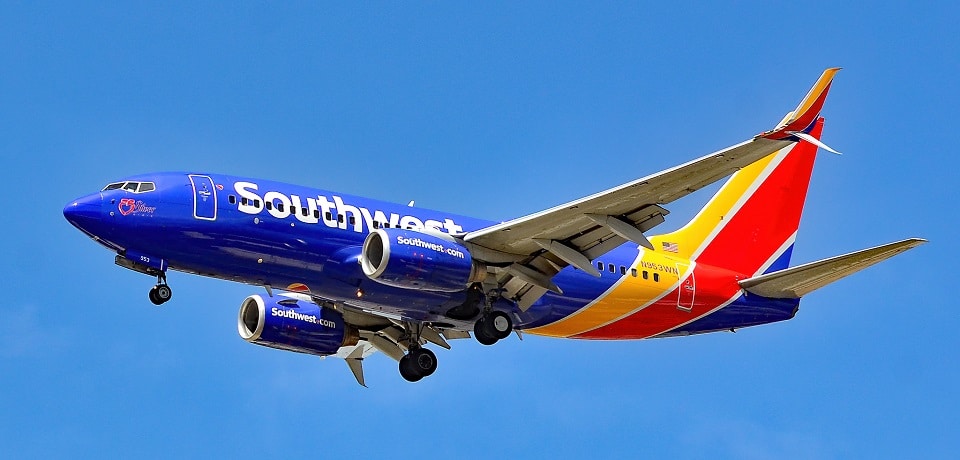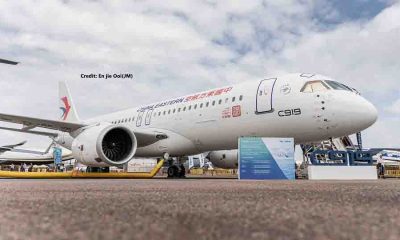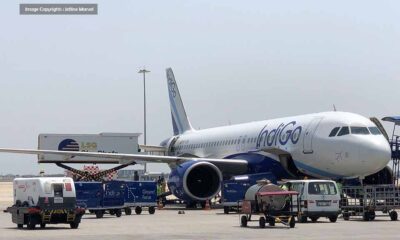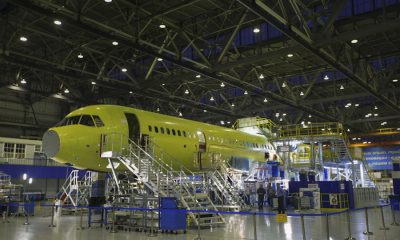Aviation
Southwest Flight Returns to Denver in Emergency Landing, Passengers in Tears

A Southwest Airlines flight, initially bound for Phoenix, faced a dramatic turn of events when it was forced to return to Denver due to a tire failure.
Passengers on Flight 225, operated by a Boeing 737-700, experienced moments of fear and uncertainty during the incident on Monday night.
“When the flight attendants said we were going to have an emergency landing, we started to panic a little bit,” recounted passenger Julianna Donadio to KDVR. “People were definitely crying and screaming and trying to console one another.”
The ordeal began with a loud noise during takeoff, followed by the unsettling realization of a tire failure. “We knew we blew a tire, but we didn’t know what the landing gear situation was,” Donadio explained, highlighting the anxiety that gripped the cabin.
In response to the situation, the flight’s pilots adhered to standard safety procedures by declaring an emergency prior to landing. A spokesperson for Southwest Airlines confirmed the tire failure during takeoff, stating, “Following standard safety procedures, the pilots declared an emergency prior to landing. The flight landed without incident and taxied off the runway.”
Despite the tense moments, the flight concluded safely, and a separate aircraft was dispatched to continue the scheduled journey to Phoenix. Southwest Airlines expressed gratitude to both the flight crew for their professionalism and the passengers for their patience, adding, “When we landed everyone was cheering and clapping.”

Aviation
Is China’s ARJ21 is better than E195 aircraft. Comparison of ARJ 21 vs E195-E2

The aviation industry has witnessed remarkable advancements in recent years, especially in the realm of regional jet aircraft.
Among these, two notable contenders stand out: the Chinese-made ARJ21 and the Embraer E195. Both aircraft have gained attention for their capabilities in the regional jet market, offering airlines versatile options for short to medium-haul routes.
In this comparison, we will delve into the key features, performance metrics, and market positioning of both aircraft to provide a comprehensive understanding of each.
The ARJ21, short for “Advanced Regional Jet for the 21st Century,” is a product of China’s ambition to establish itself as a key player in the global aerospace market. Developed by the Commercial Aircraft Corporation of China (COMAC), the ARJ21 aims to cater to the growing demand for regional air travel within China and beyond. With its maiden flight in 2008 and subsequent commercial service, the ARJ21 represents China’s first foray into designing and manufacturing modern regional jet aircraft.
In contrast, the Embraer E195 is a well-established player in the regional jet market, hailing from Brazil’s Embraer, one of the world’s leading aircraft manufacturers. The E195 is part of Embraer’s E-Jet family, renowned for its efficiency, comfort, and reliability. Since its introduction in the mid-2000s, the E195 has gained widespread acceptance among airlines worldwide, serving both regional and short-haul routes with distinction.
When comparing the China ARJ21-900 and the Embraer E195-E2, several differences emerge. The ARJ21-900 boasts a seating capacity of up to 105 passengers in a single-class configuration, whereas the E195-E2 offers a higher seating capacity, accommodating 146 passengers in a single-class layout.
In terms of dimensions, the ARJ21-900 has a length of 36.35 meters and a wingspan of 27.28 meters, whereas the E195-E2 is slightly larger, with a length of 38.66 meters and a wingspan of 28.73 meters.
Additionally, ARJ21-900 stands at a height of 8.44 meters while E195-E2 features a taller height at 10.54 meters.
Both aircraft are powered by General Electric CF34 engines, with the ARJ21-900 utilizing the CF34-10A variant generating 18,500 pounds of thrust per engine, and the E195-E2 employing the CF34-10E variant with 20,000 pounds of thrust per engine. This difference in engine thrust contributes to the E195-E2’s superior performance capabilities.
In terms of maximum takeoff weight, ARJ21-900’s has 47,182 kilograms, while the E195-E2 has a higher capacity at 52,290 kilograms, potentially enabling the E195-E2 to carry more payload over longer distances.
Service Ceiling: The ARJ21-900 boasts a slightly higher service ceiling of 11,900 meters compared to the E195-E2’s service ceiling, although precise figures for the latter are not provided.
Wing Area: ARJ21-900’s has wing area of 79.86 square meters. Whereas E195-E2 features a larger wing area of 92.53 square meters.
ARJ21-900’s has range of 1,800 nautical miles, While the E195-E2 boasts a slightly longer range of 2,300 nautical miles compared to the making it more suitable for longer routes and expanding the operational range for airlines.
The ARJ21 boasts a maximum speed of 870 km/h (470 knots), whereas the E195-E2 achieves a slightly higher maximum speed of 871 km/h (470 knots)
The ARJ21 now boasts a state-of-the-art supercritical wing crafted by the Antonov Design Bureau, featuring a sleek 25-degree sweepback along with winglets. China’s advanced supercomputers have played a pivotal role in designing various components for the ARJ21 aircraft.
Embraer targets lower fuel consumption of 16–24% and maintenance costs per seat of 15–25%. Built on the first version of the E-Jet, it features a new fly-by-wire system, new pylons, landing gear, horizontal stabilizers, cabin, cabin air system, air cycle machine, and cabin.
On January 1, 2023, the bureau formally approved the ARJ21 passenger-to-cargo design change project, signalling a significant advancement in the development of commercial jet cargo aircraft in country and a more secure step in the serialization of the ARJ21 project. ARJ21 passenger-to-cargo conversion is committed to becoming the main model in the regional air cargo market.
The E195-E2 was successfully tested on 100% SAF in June 2022, demonstrating that the E-Jets E2 series can fly with blends up to 100% SAF without sacrificing performance or safety. Compared to earlier generations of aircraft, the E2 emits 25% lower CO2 emissions now; with SAF, this reduction can reach 85%.
-

 Airlines3 weeks ago
Airlines3 weeks agoInvestigations Reveal Fake Chinese Titanium in Boeing and Airbus Jets
-

 Aviation2 months ago
Aviation2 months agoEmirates is hiring pilots with higher salaries across 18 countries
-

 Airlines2 months ago
Airlines2 months agoThese are two airlines that placed the largest orders for Comac
-

 Aerospace2 months ago
Aerospace2 months agoIndiGo to Order 100 Small Planes from Airbus, ATR, or Embraer
-

 Tech1 week ago
Tech1 week agoChina’s CATL Plans 1,800-Mile Electric Plane Launch by 2027
-

 Aerospace1 week ago
Aerospace1 week agoChina’s Fighter Jets Turn Wings into Autonomous Drones
-

 Aviation4 weeks ago
Aviation4 weeks agoRussia’s Venture into Spare Parts Production for Western-Made Jets
-

 Travel2 months ago
Travel2 months agoQantas to Introduce Daily Flights from Bengaluru to Sydney







